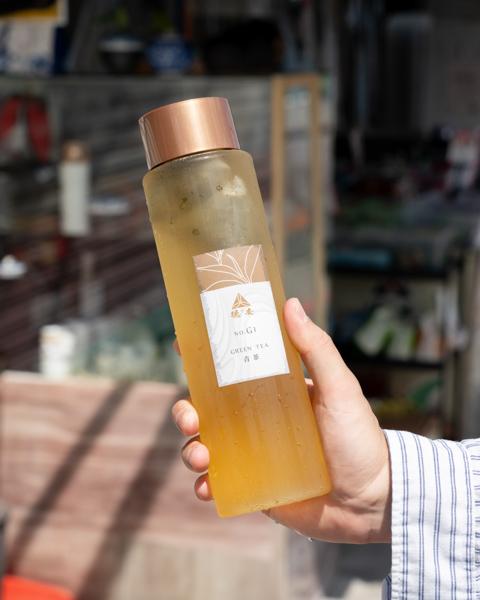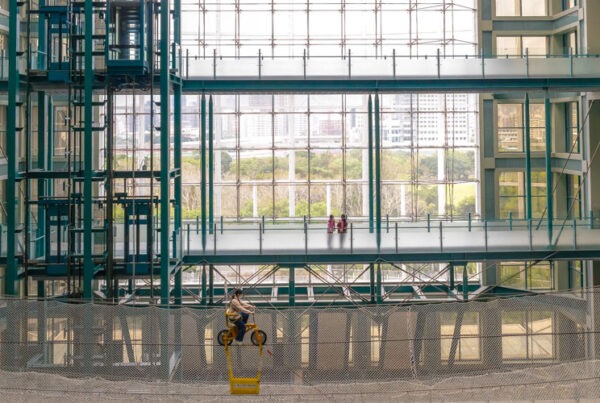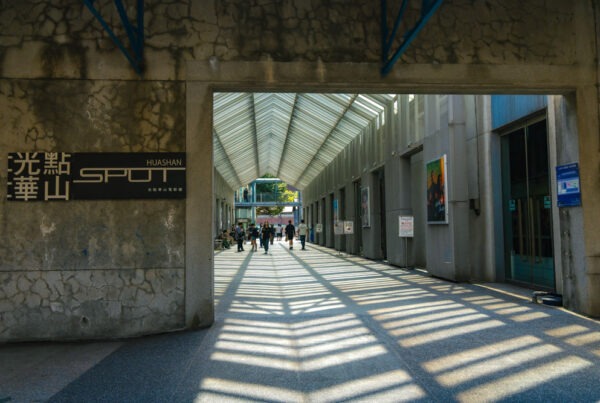Sightseeing and Snacking Along the Tamsui River
TEXT | RICK CHARETTE
PHOTOS | VISION
The old Guandu community, to the north of where the Keelung River flows into the Tamsui,was one of northern Taiwan’s earliest locations settled by Han Chinese. Today, the area sees a steady stream of day-trippers arriving to explore the avian riches of Guandu Nature Park, the magnificent heritage Guandu Temple, riverside bikeway cycling, old-timey shops, and the sleek new Guandu Wharf Container Market.
Note: This article was published in the 2024 Autumn Edition of TAIPEI magazine, a publication by the Taipei City Government.
Getting There and Getting Around
Start your day-trip outing by riding the Taipei Metro to MRT Guandu Station, then renting a bike, either a YouBike at the station or a bike from the Taipei Riverside Bike Rental Center, approximately 14min on foot by the riverside, immediately north of Guandu Temple. The bike rental center is close to the Guandu Wharf Container Market on the Guandu section of the city’s extensive riverside bikeway system. This network of interconnected gentle-grade bikeways stretches well over 100km, looping the city’s central core and heading out into New Taipei City, including the coastal port town of Tamsui along the Tamsui River. The Guandu section is among the most popular and an ideal ride for cycling tourists.


Guandu Nature Park
Immerse yourself in the wildlife bounty at the 57ha Guandu Nature Park wetland area where the Tamsui and Keelung rivers meet. It’s a short 15min walk south of the metro station. An important stop for migratory birds, this pristine birding haven hosts birds of passage in great numbers from October to April, with over 300 species recorded. There are also wetland endemic plants, fiddler crabs, mudskippers, and other flora/fauna attractions, making this one of Taiwan’s most cherished nature-edutainment treasures.



Among the wealth of facilities that maximize the pleasure of your visit are nature trails, wood-built birdwatching cabins, and a nature center. The trails bring you through a coastal forest area, riparian ecology area, freshwater ponds, crab-watching area, and low-elevation forest area.
Guandu Flower Carnival
This November bloom floral fest showcases vast fields of diverse flowers, including garden cosmos, offering countless photo opportunities. These flowers spring naturally from seeds scattered across a large area of farmland on the scenic Guandu Plain, adjacent to Guandu Nature Park. The iconic Mt. Guanyin and Yangmingshan massif provide a stunning backdrop. This level terrain is ideal for cycling excursions.
Now let’s switch from appreciation of charmers nature-made to sensory enchanters man-made. Big, bold, color-extravagant Guandu Temple is a 10min walk west of the nature park entrance, overlooking the Tamsui shore.
Guandu Temple
Why a great temple here? This spot flourished as a wharf area in imperial times, a key disembarkation point for Han Chinese settlers who would spread out across north Taiwan, and an important entrepot for cross-Taiwan Strait trade. Guandu Temple was founded in 1712, its main deity Mazu, Goddess of the Sea, responsible for the safety of all those braving the oft-treacherous strait passage.


Set against a cliff that rises high above it, this is one of Taiwan’s three oldest and most important Mazu temples, the other two being Tianhou Temple in central Taiwan’s Lukang town and Chaotian Temple in the south’s Beigang. The complex is a treasure house of master-crafted dragon pillars, stone lion, and wall sculpture art.
Another highly unusual, beguiling feature is the Ancient Buddha Pit, entrance to the main hall’s right, a cliff tunnel stretching over 100m (a transformed air-raid shelter) featuring vividly painted life-sized statues of 28 Buddhist deities set into the walls. At the passage’s end is a magisterial golden statue of a thousand-armed Guanyin (Goddess of Mercy). The exit behind leads to a terrace with a splendid river view. Note that another cliff tunnel leads to an even grander view atop the cliff.


Guandu Temple 關渡宮
360, Zhixing Rd., Beitou District
(02) 2858-1281
www.kuantu.org.tw
OK, tummy says time for food and drink! Here are three recommended temple-neighbor heritage shops selling traditional baked treats and teas.
Si Tang sells a delicious range of traditional Chinese pastry treats, savory and sweet, hand-crafted on-site by master bakers. Buy items individually or in pretty gift-box packaging. Head out on a cultural exploration with your palate exploring such items as Golden Pastry, Money Pastry, Good Fortune Pastry, Kaz Pastry, and Chili Pastry.


Si Tang 歖饄餅舖
212-3, Ln. 301, Sec. 3, Dadu Rd., Beitou District
0986-678-363
instagram.com/sitang111
9:00am-6:00pm
Taiwan is one of the world’s great producers of premium tea leaf, and De An Baking Tea, which roasts its teas on-site, provides a diversity of both processed leaf and cold fresh-made tea drinks perfect for quenching your thirst on warm days of walking or cycling. Among its selection of English-labeled cooling beverages are Honey Flavored Black Tea, Tieguanyin Tea, High Mountain Jinxuan Tea, Green Tea, and Aged Tea.


De An Baking Tea 德安茶行
223, Ln. 301, Sec. 3, Dadu Rd., Beitou District
(02) 2858-1956
Wed. to Sun. 10:00am-6:00pm
A Dui Twins is another classic Taiwan-style family-run shop, open-faced with the display/service counter right on the street, and customers lining up outside. The signature goodie at this maker of traditional pastry is shuangbaotai, literally “twins,” a sweetened donut-style treat of Fuzhou origin consisting of two small balls of chewy dough stuck together and deep-fried.


A Dui Twins 阿對雙胞胎
222, Ln. 301, Sec. 3, Dadu Rd., Beitou District
0918-880-607
Tue. to Fri. 12:30pm-6:00pm
Sat. and Sun. 10:30am-7:00pm
Let’s turn our attention to the area’s newest magnet drawing in tourists, the riverside Guandu Wharf Container Market. It’s just north of Guandu Temple, beside the Taipei Riverside Bike Rental Center mentioned earlier.
Guandu Wharf Container Market
The Guandu Wharf Container Market was set up by the city government as part of its efforts to connect the city’s riverbank areas with adjoining neighborhoods. In the past, the dikes in between, built to protect Taipei’s urban areas from typhooncaused flooding, gave rise to a sense of separation.
Its grand opening ceremony was held this past May. Inspired by the popular Dadaocheng Wharf Container Market in the city’s Datong District, which has become a must-experience for foreign tourists, this is a thick cluster of cargo containers attractively transformed into food and beverage outlets. Directly before it is Guandu Wharf, used for river cruises. The family-friendly plaza the market sits on is also home, immediately on the north of the container market/bike-rental center, to a section outfitted in 2023 with an expanded and vivified Guandu Wharf Fountain and new sand play and physical fitness facilities.


The container market’s varied operators supply a wide range of local and international fare to choose from, such as Western-style pizzas, burgers, pasta, and fries to Thai curry rice dishes to Korean spicy chicken to Japanese pleasures such as onigiri and unadon to local food and drink favorites including hotpot and tofu pudding. Note that a number of the enterprises are licensed to serve alcohol, providing beer and cocktails. Choose from stylish alfresco seating on the railing-protected container roofs and awning-shade picnic table sections at ground level. The market is busy in the evenings, especially so for the glowing sunsets over low Mt. Guanyin across the river, to the northwest. Live music performances are regularly scheduled, most heavily on weekends and holidays, during the day and in the evening.





About the author

Rick Charette
A Canadian, Rick has been resident in Taiwan almost continually since 1988. His book, article, and other writings, on Asian and North American destinations and subjects—encompassing travel, culture, history, business/economics—have been published widely overseas and in Taiwan. He has worked with National Geographic, Michelin, APA Insight Guides, and other Western groups internationally, and with many local publishers and central/city/county government bodies in Taiwan. Rick also handles a wide range of editorial and translation (from Mandarin Chinese) projects.












